Types of meadowsweet
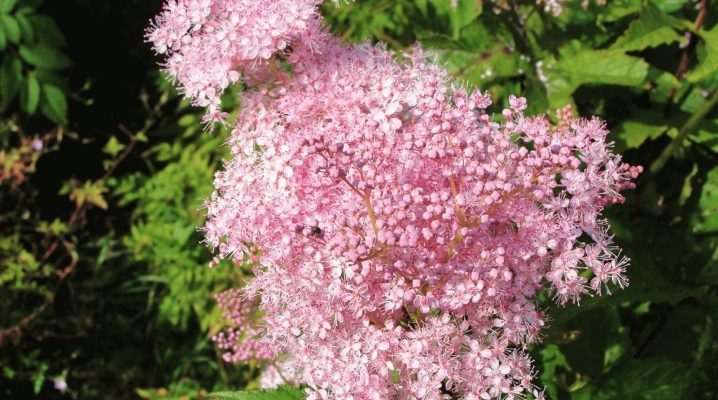
Experienced gardeners know that the perennial meadowsweet (meadowsweet) is not only a medicinal plant, but also an ornamental plant. The culture is valued for its decorative effect and duration of flowering. Many people are happy to use these picturesque shrubs in landscape design and decoration of local areas. There are more than a dozen varieties of meadowsweet. Let's figure out which ones, and how exactly they differ.
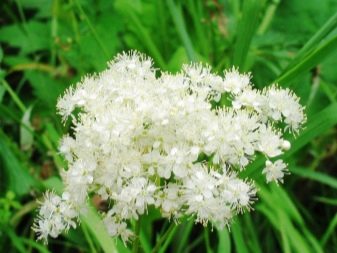

Description of common meadowsweet
Common meadowsweet is also called six-petalled meadowsweet. Grows in meadows and glades, near river floodplains. The plant is common in regions of our planet with a temperate climate. In our country, you can see numerous thickets of meadowsweet in the European part.
The leaves of the culture are intermittently dissected, the stems end with inflorescences of a white or pale pink hue, blooming in June-July. The fruits are hairy nuts.
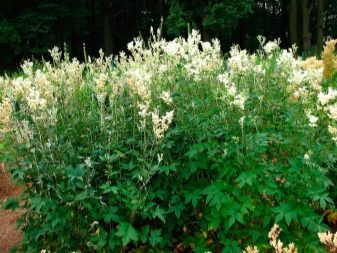
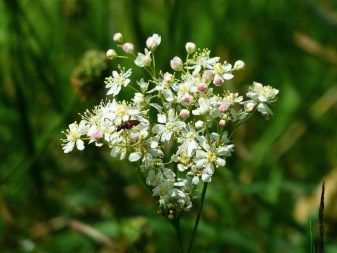
Meadowsweet and its varieties
The height of the stems ranges from 100 to 170 cm. This culture has large pinnately dissected leaves of a dark green shade with yellow spots. A pleasant smell comes from the leaves. Flowering stems form dense thickets. White or beige flowers of the plant smell like honey, consist of 5 petals. Lush panicles grow up to 20 centimeters in length.
Experienced gardeners know that the shrub looks spectacular for about 3 weeks during the flowering period, and then turns into a darker shade.... Other popular names for the meadowsweet are also interesting - they call it white grass, honey plants, wet raspberries, whiteheads, magpies, meadowsweet, marsh honey. And among the popular varieties, the following are noted: Variegata, Aurea, Plena, Nana, Magnifica.
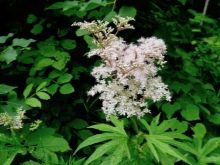
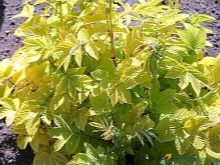
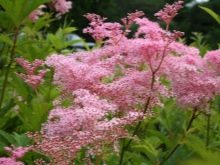
Hand-shaped meadowsweet
The plant is distributed in forests, fields and meadows throughout the Russian Far East and Eastern Siberia. This name was given due to the fact that large leaves look like a human palm (hand). The shrub reaches a height of about 1 meter. It blooms for a month with small white flowers in panicles up to 20 cm long. It has long rhizomes, which allows the plant to grow rapidly over large areas.
It is widely used by summer residents and in landscape design, and can also be planted in parks in curtains, on a lawn in an open place.
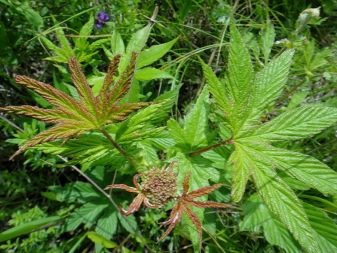
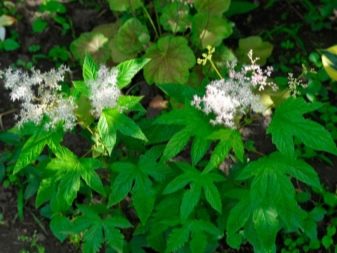
Kamchatka meadowsweet
Another name for this plant is the silkworm... The shoots of this variety are distinguished by their height up to 3 m and leaves up to 40 cm long. The inflorescence is covered with creamy flowers of a delicate shade. When flowering is over, the plant still looks festive thanks to its unusual ciliated fruit. This species of meadowsweet needs moist soil and likes slightly shaded areas.
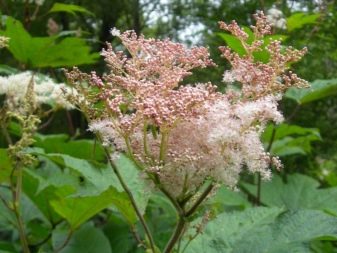

Other types
Red
Red Meadowsweet (Venusta) grows in the eastern regions of North America. This mighty plant can reach a height of almost a record 2.5 meters for this crop. The inflorescence is dense and consists of pink flowers, while not only they are decorative, but also raspberry fruits.
The plant loves moist and sunny areas.

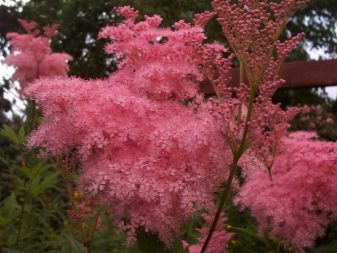
Purple
This hybrid is common in China, Japan and Korea. The height of the bush is usually 0.5 meters. Green leaf plates, with underdeveloped lateral processes. Flowers of a dark pink or purple hue form lush panicles. As a rule, fruits with cilia are somewhat underdeveloped.The garden form of this variety is elegans, with white flowers and red stamens. The plant usually blooms from July to August.
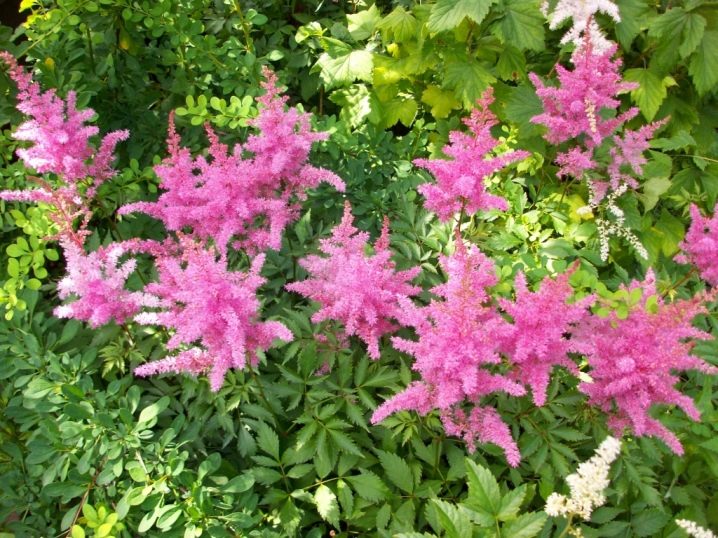
Naked
This herbaceous plant reaches 1-2 m in height. It grows in meadows, forests, near the shores of lakes, oxbows, in swamps, in shaded areas. The leaves are intermittent-pinnate, dense. Flowers are yellow-white in dense paniculate inflorescence up to 20 cm long. Fruits are about 3-4 mm, spirally twisted. This variety is common in Ukraine, Belarus, in the European Arctic, in the European part of Russia (all regions except the Black Sea, Lower Don, Lower Volga), in the Caucasus.
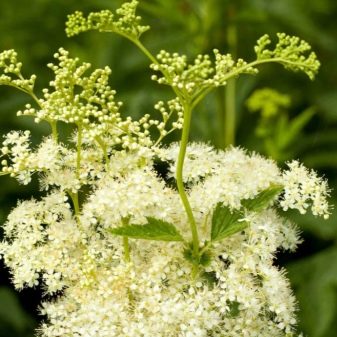
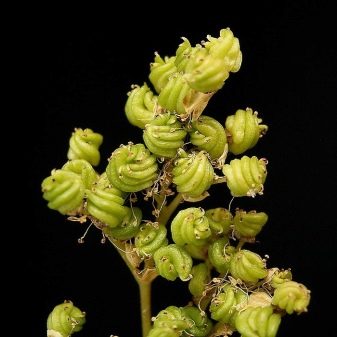
Narrow-bladed
Variety Filipendula angustiloba has thinly dissected leaves covered with pubescence from below.
In our country, it is found only in the very south of the Amur Region, where it hybridizes with the palm-like meadowsweet.

Variegated variegated (variegated)
The plant up to 1.5 meters in height usually forms dense thickets of sturdy red-brown stems. The flowers of the plant are small, white, standard for this culture, with a fragrant honey aroma. This variety retains its decorative properties only during flowering.
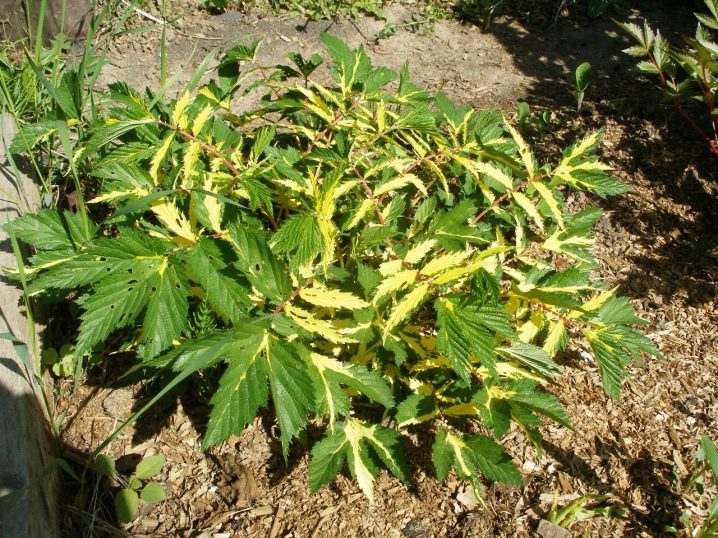
West
This widespread variety of meadowsweet usually reaches a height of about 1 m. It has large leaves. The inflorescence is a panicle with white flowers up to 2 cm.
Meadowsweet in landscape design
Gardeners often use meadowsweet as a decorative hedge, which is not only beautiful but also completely free. Moreover, in this way, you can not only protect the site, but also disguise unsightly household structures.
The meadowsweet is also suitable for decorating the reservoirs available on the site, since the plant loves wet places.
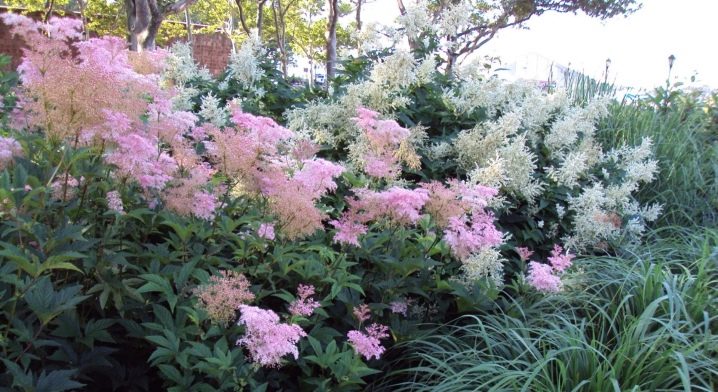
This culture can be used in compositions with various plants. The most common combinations are: with ferns, lilies, irises, carnations and hydrangeas. Rockeries should be decorated with low-growing varieties, or borders can be effectively emphasized. But taller options - for example, Kamchatka meadowsweet, are perfect for open lawns.
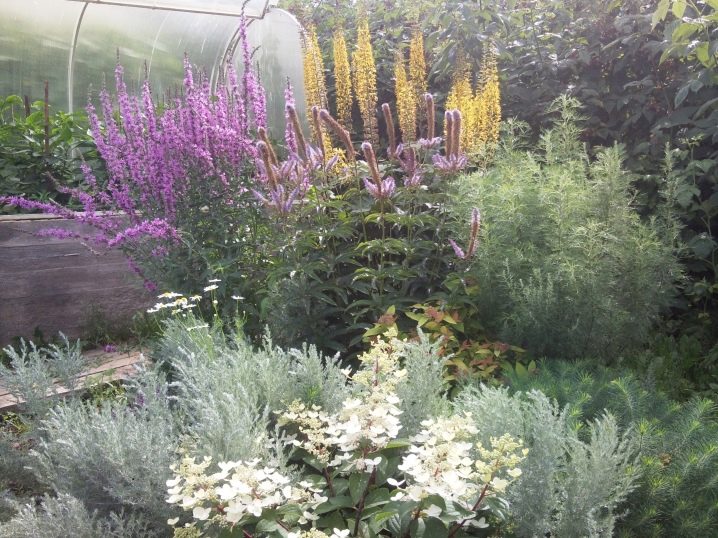
By the way, when planting this plant, gardeners should not forget that meadowsweet has a very real practical application on the site - it scares away many pests. And also in the presence of this plant, the invasion of flies and mosquitoes will significantly decrease. As you can see, there are more than enough positive aspects for the cultivation of this culture.














The comment was sent successfully.